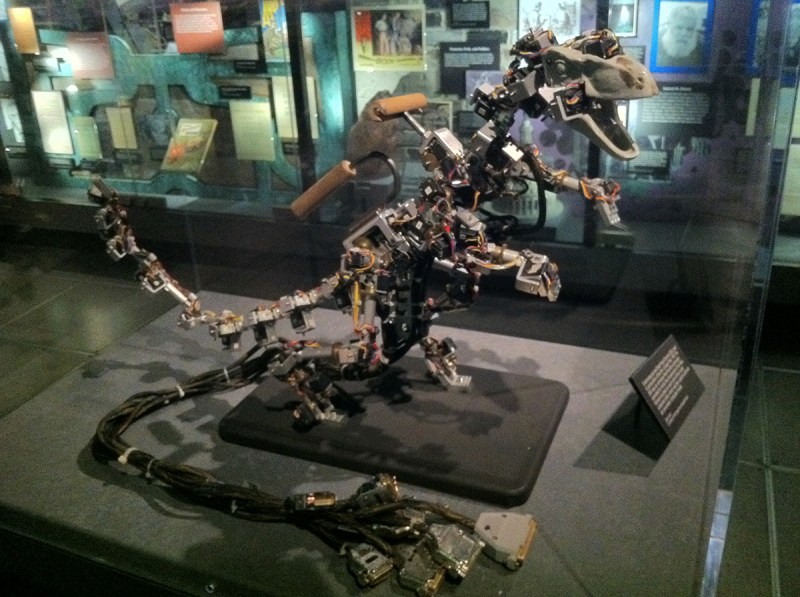In a double-blast from the past, [Ian Failes]’ 2018 interview with [Phil Tippett] and others who worked on Jurassic Park is a great look at how the dinosaurs in this 1993 blockbuster movie came to be. Originally conceived as stop-motion animatronics with some motion blurring applied using a method called go-motion, a large team of puppeteers was actively working to make turning the book into a movie when [Steven Spielberg] decided to go in a different direction after seeing a computer-generated Tyrannosaurus rex test made by Industrial Light and Magic (ILM).
Naturally, this left [Phil Tippett] and his crew rather flabbergasted, leading to a range of puppeteering-related extinction jokes. Of course, it was the early 90s, with computer-generated imagery (CGI) animators being still very scarce. This led to an interesting hybrid solution where [Tippett]’s team were put in charge of the dinosaur motion using a custom gadget called the Dinosaur Input Device (DID). This effectively was like a stop-motion puppet, but tricked out with motion capture sensors.
This way the puppeteers could provide motion data for the CG dinosaur using their stop-motion skills, albeit with the computer handling a lot of interpolation. Meanwhile ILM could handle the integration and sprucing up of the final result using their existing pool of artists. As a bridge between the old and new, DIDs provided the means for both puppeteers and CGI artists to cooperate, creating the first major CGI production that holds up to today.
Even if DIDs went the way of the non-avian dinosaurs, their legacy will forever leave their dino-sized footprints on the movie industry.
Thanks to [Aaron] for the tip.
Top image: Raptor DID. Photo by Matt Mechtley.















Don’t know what methods were used on Jurrasic 3 graphics, but when the somesortasuraus was ripping the plane fuselage apart?
Ad a large, old school, stereo and it was danged entertaining to watch.
Well done folks, you take me on a bit fantasy/escapisim for a couple of hours with your movies.
https://www.imdb.com/title/tt15095920/
for balance considering the bias that would be in that interview.
“The doc tells the life story of Steve “Spaz” Williams, who is considered a pioneer in computer animation after his groundbreaking work.. on jurassic park and terminator 2”
Seeing this story on HaD this morning is bizarre, as my wife and I just sat down with our kids to watch this movie with them last night, their first time seeing it.
That’s quite the timing.
What’s amazing is that Maya was able to research and write up the blog so quickly after she found out you were watching it!
Input devices can be weird, especially when you’re dealing with unusual characters. There’s a certain amount of “does this make sense to the animator?” that can lead you in some pretty weird directions.
Laika Studios once used a bowling ball as a waldo for one of their puppets
https://www.youtube.com/watch?v=9vchku95yLU
The ‘DID’ or as we called it… the ‘DID’nt’, because it didn’t work, did only 3/50 shots of which me and Armstrong had to through out all the curves and just extract key positions by Randy Dutra. The rest of the shots were animated by me Armstrong, Price and Strauss at ILM.
You did an amazing job. I loved that movie.
During the filming of Jurassic Park, a special assistant was hired to wipe the T-Rex because he was known to sweat profusely as it was his first major role in 55 million years.
https://piximus.net/media/36618/behind-the-scenes-photos-from-the-making-of-the-first-jurassic-park-film-3.jpg